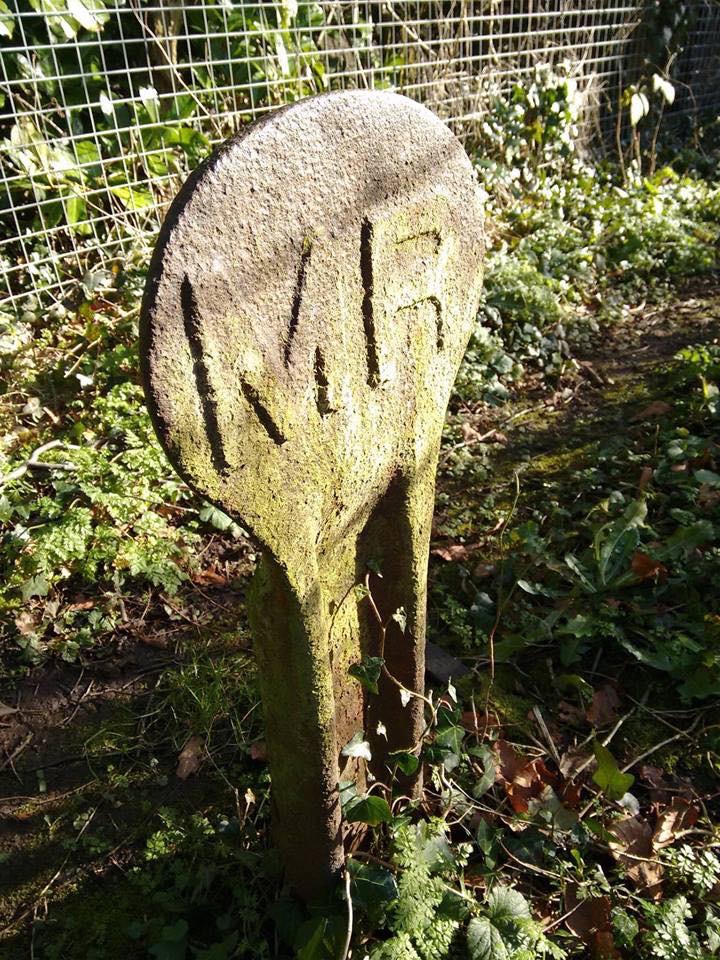|
Caledonian Railway Single
Caledonian Railway Single No. 123 is a preserved Scottish steam locomotive. The unique 4-2-2 was built by Neilson and Company in 1886, works No. 3553, as an exhibition locomotive. In 1914 it was placed on the Caledonian Railway duplicate list, and renumbered 1123. It entered London, Midland and Scottish Railway service in 1923 and the LMS renumbered it 14010 and gave it the power classification 1P. During the 1920s it was allocated to working the directors' saloon, but it was returned to ordinary service in 1930. The locomotive was withdrawn in 1935, by which time it was the last single-wheeled express engine running in Britain, and set aside for preservation. This engine could reach speeds of up to 60 mph (97 km/h). Restored to steam by British Railways in 1958, it ran railtours and enthusiast specials until the end of steam in Scotland. History No. 123 was designed by the Caledonian Railway's chief locomotive engineer Dugald Drummond in partnership with Neilson and Company ... [...More Info...] [...Related Items...] OR: [Wikipedia] [Google] [Baidu] |
Glasgow Museum Of Transport
The Riverside Museum (formerly known as the Glasgow Museum of Transport) is a museum in Glasgow, housed in a building at Pointhouse Quay in the Glasgow Harbour regeneration district of Glasgow, Scotland. The building opened in June 2011, winning the 2013 European Museum of the Year Award. It houses many exhibits of national and international importance. The Govan-Partick Bridge will provide a pedestrian link from the museum across the Clyde to Govan. It is set to be completed in 2023. History 1964–2011 The Museum of Transport was opened on 14 April 1964 by Queen Elizabeth The Queen Mother. Created in the wake of the closure of Glasgow's tramway system in 1962, it was initially located at the former Coplawhill tram depot on Albert Drive in Pollokshields, before moving to the Kelvin Hall in 1988. The old building was subsequently converted into the Tramway arts centre. The museum was then situated inside the Kelvin Hall opposite the Kelvingrove Art Gallery & Museum in the w ... [...More Info...] [...Related Items...] OR: [Wikipedia] [Google] [Baidu] |
Drafter
A drafter (also draughtsman / draughtswoman in British and Commonwealth English, draftsman / draftswoman or drafting technician in American and Canadian English) is an engineering technician who makes detailed technical drawings or plans for machinery, buildings, electronics, infrastructure, sections, etc. Drafters use computer software and manual sketches to convert the designs, plans, and layouts of engineers and architects into a set of technical drawings. Drafters operate as the supporting developers and sketch engineering designs and drawings from preliminary design concepts. Overview In the past, drafters sat at drawing boards and used pencils, pens, compasses, protractors, triangles, and other drafting devices to prepare a drawing by hand. From the 1980s through 1990s, board drawings were going out of style as the newly developed computer-aided design (CAD) system was released and was able to produce technical drawings at a faster pace. Many modern drafters no ... [...More Info...] [...Related Items...] OR: [Wikipedia] [Google] [Baidu] |
British Royal Train
The British Royal Train is used to convey senior members of the British royal family and associated staff of the Royal Household around the railway network of Great Britain. It is owned, maintained and operated by DB Cargo UK. The Royal Train comprises a dedicated set of claret liveried sleeper, dining and lounge carriages. The current rolling stock dates from 1977 to 1987. They are arranged according to requirements, and stored when not in use. The earliest royal coaches date back to the mid-19th century in the reign of Queen Victoria; until an upgrade in 1977 there were multiple sets based in different regions, a legacy of the pre-nationalisation era of railways in Britain. Many are now in museums or on heritage railways; the National Railway Museum in York has a royal themed exhibition. Dedicated locomotives have never traditionally been part of the Royal Train, first appearing in special livery only in the 1990s, but also seeing use on other trains since 2003. In t ... [...More Info...] [...Related Items...] OR: [Wikipedia] [Google] [Baidu] |
Double Heading
In railroad terminology, double heading indicates the use of two locomotives at the front of a train, each operated individually by its own crew. The practice of triple-heading involves the use of three locomotives. The practice of multi-heading involves the use of multiple locomotives and so on. Double heading is most common with steam locomotives, but is also practised with diesel locomotives. It is not strictly the same practice as two or more diesel or electric locomotives working ' in multiple' (or 'multiple-working'), where both (or all) locomotives are controlled by a single driver in the cab of the leading locomotive. Advantages Double heading is practised for a number of reasons: * In the UK it was usually to gain traction on steep inclines, twice the amount of driven wheels - twice the amount of grip. * The need for additional motive power when a single locomotive is unable to haul the train due to uphill grades, excessive train weight, or a combination of the t ... [...More Info...] [...Related Items...] OR: [Wikipedia] [Google] [Baidu] |
Beattock Summit
Beattock Summit is the highest point of the West Coast Main Line (WCML) railway and of the A74(M) motorway as they cross between Dumfries and Galloway and South Lanarkshire in south west Scotland. Railway history The highest point on the Caledonian Railway Main Line north of the border (built by the Caledonian Railway and opened on 15 February 1848), it is located 52 miles (83 km) south of Glasgow Central and 349 miles (558 km) north of London Euston stations. The height of the summit is 1,033 feet (315 m) above sea level, which is reached by the adjacent A74(M) motorway. The railway reaches a slightly lower elevation of . The summit is the watershed between the River Clyde to the north and Evan Water, a tributary of the River Annan to the south. The northbound climb has a ascent, with gradients of up to 1 in 69 (1 foot of rising or falling gradient for every 69 feet of distance) which made it a notoriously severe climb in the days of steam ... [...More Info...] [...Related Items...] OR: [Wikipedia] [Google] [Baidu] |
Carlisle, Cumbria
Carlisle ( , ; from xcb, Caer Luel) is a city that lies within the Northern English county of Cumbria, south of the Scottish border at the confluence of the rivers Eden, Caldew and Petteril. It is the administrative centre of the City of Carlisle district which, (along with Cumbria County Council) will be replaced by Cumberland Council in April 2023. The city became an established settlement during the Roman Empire to serve forts on Hadrian's Wall. During the Middle Ages, the city was an important military stronghold due to its proximity to the Kingdom of Scotland. Carlisle Castle, still relatively intact, was built in 1092 by William Rufus, served as a prison for Mary, Queen of Scots in 1568 and now houses the Duke of Lancaster's Regiment and the Border Regiment Museum. In the early 12th century, Henry I allowed a priory to be built. The priory gained cathedral status with a diocese in 1133, the city status rules at the time meant the settlement became a city. ... [...More Info...] [...Related Items...] OR: [Wikipedia] [Google] [Baidu] |
Vacuum Brake
The vacuum brake is a braking system employed on trains and introduced in the mid-1860s. A variant, the automatic vacuum brake system, became almost universal in British train equipment and in countries influenced by British practice. Vacuum brakes also enjoyed a brief period of adoption in the United States, primarily on narrow-gauge railroads. Their limitations caused them to be progressively superseded by compressed air systems starting in the United Kingdom from the 1970s onward. The vacuum brake system is now obsolete; it is not in large-scale usage anywhere in the world, other than in South Africa, largely supplanted by air brakes. Introduction In the earliest days of railways, trains were slowed or stopped by the application of manually applied brakes on the locomotive and in brake vehicles through the train, and later by steam power brakes on locomotives. This was clearly unsatisfactory, given the slow and unreliable response times (each brake being separately applied ... [...More Info...] [...Related Items...] OR: [Wikipedia] [Google] [Baidu] |
Midland Railway 115 Class
The Midland Railway 115 Class was the third of four classes of 4-2-2 steam locomotive, nicknamed "Spinners", designed by Samuel Waite Johnson. A total of 15 of the class were built between 1896 and 1899. They were capable of reaching speeds of up to 90 miles per hour (145 km/h).. One engine, No. 673, is preserved in the National Collection. Classes of Midland Railway 4-2-2 locomotives Single-driver locomotives had been superseded in the late 19th century as loads increased, but were then reintroduced when steam sanding allowed better adhesion. Five similar classes were built, with slight enlargements each time, and details as follows: Construction history The fifteen locomotives in the 115 class were built in two batches, both at Derby Works. Service history It was quite common for engines of this class to pull a typical Midland express weighing , which suited the Class 115 perfectly. Given a dry rail they could maintain a tight schedule with . Speeds up to 90 mph w ... [...More Info...] [...Related Items...] OR: [Wikipedia] [Google] [Baidu] |
Midland Railway
The Midland Railway (MR) was a railway company in the United Kingdom from 1844. The Midland was one of the largest railway companies in Britain in the early 20th century, and the largest employer in Derby, where it had its headquarters. It amalgamated with several other railways to create the London, Midland and Scottish Railway at grouping in 1922. The Midland had a large network of lines emanating from Derby, stretching to London St Pancras, Manchester, Carlisle, Birmingham, and the South West. It expanded as much through acquisitions as by building its own lines. It also operated ships from Heysham in Lancashire to Douglas and Belfast. A large amount of the Midland's infrastructure remains in use and visible, such as the Midland main line and the Settle–Carlisle line, and some of its railway hotels still bear the name '' Midland Hotel''. History Origins The Midland Railway originated from 1832 in Leicestershire / Nottinghamshire, with the purpose of serving the nee ... [...More Info...] [...Related Items...] OR: [Wikipedia] [Google] [Baidu] |
Railway Air Brake
A railway air brake is a railway brake power braking system with compressed air as the operating medium. Modern trains rely upon a fail-safe air brake system that is based upon a design patented by George Westinghouse on April 13, 1869. The Westinghouse Air Brake Company was subsequently organized to manufacture and sell Westinghouse's invention. In various forms, it has been nearly universally adopted. The Westinghouse system uses air pressure to charge air reservoirs (tanks) on each car. Full air pressure causes each car to release the brakes. A subsequent reduction or loss of air pressure causes each car to apply its brakes, using the compressed air stored in its reservoirs. Overview Straight air brake In the air brake's simplest form, called the ''straight air system'', compressed air pushes on a piston in a cylinder. The piston is connected through mechanical linkage to brake shoes that can rub on the train wheels, using the resulting friction to slow the train. ... [...More Info...] [...Related Items...] OR: [Wikipedia] [Google] [Baidu] |
Sandbox (locomotive)
A sandbox is a container on most locomotives, multiple units and trams that holds sand, which is dropped on the rail in front of the driving wheels in wet and slippery conditions and on steep grades to improve traction. Sand delivery The sand may be delivered by gravity, by a steam-blast (steam locomotives) or by compressed air. Gravity sanding requires that the sand be dry so that it runs freely. Locomotives use multiple sandboxes, so that their delivery pipes could be short and nearly vertical. Engine sheds in the UK were equipped with sand drying stoves, so that sandboxes could be refilled each morning with dry sand. Steam locomotives in the US had a single sandbox, called a sand dome, atop the boiler where the rising heat helped to dry the sand. Even with this arrangement, sand pipes tended to clog, and by the 1880s, pneumatic sanding systems were being proposed. Steam sanding The development of steam sanding was influential on locomotive design. As the sand could then be ... [...More Info...] [...Related Items...] OR: [Wikipedia] [Google] [Baidu] |



.jpg)


_vacuum_brake_1.jpg)

